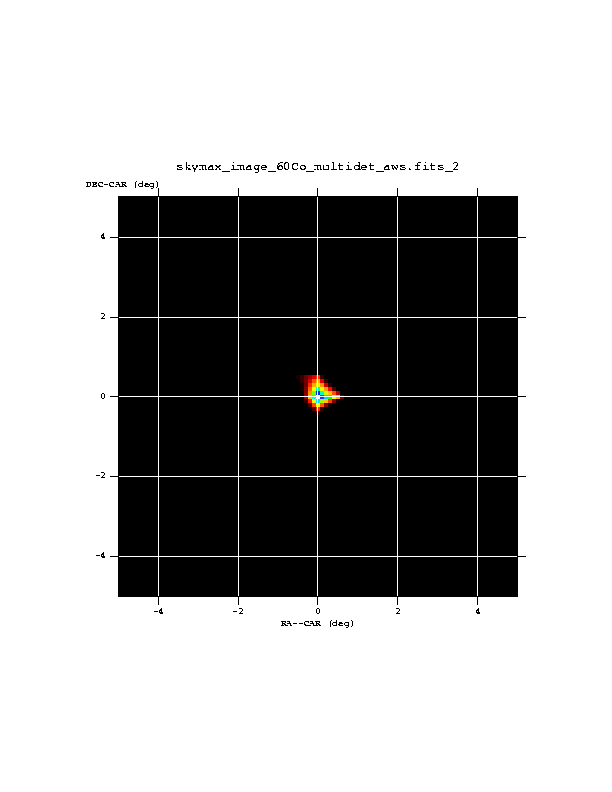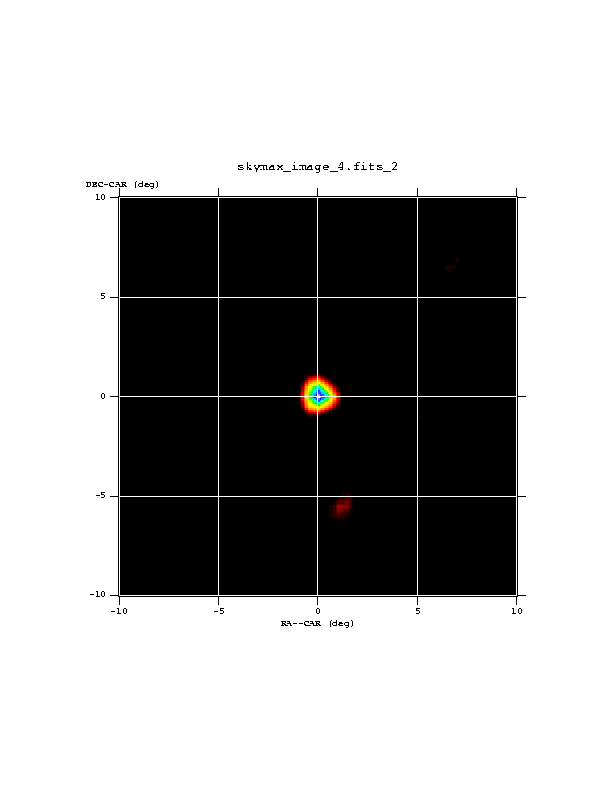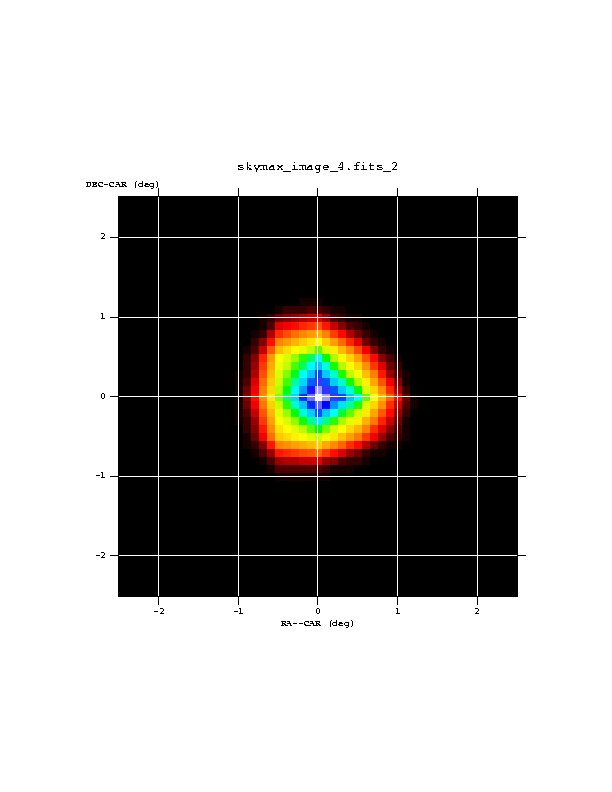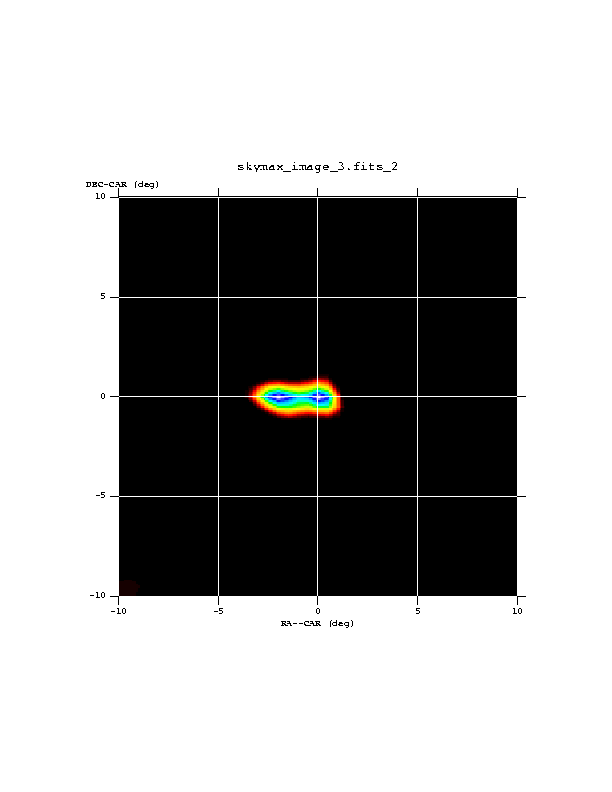
This is an informal page to give some information on current analysis activity of Bruyeres-le-Chatel data at MPE, in particular for ISDAG internal work. I maintain also a more externally orientated site.
All results are obtained using data and software installed at ISDC. Started 1 June 2001, last updated 11 June 2002. Results are added at the end of this page as they become available. The most recent results are in the 24 Sep 2001 ISDAG presentation and from 5 Nov (demonstration of 1 degree resolution) below. Preview of upcoming December meeting also available.
Multidetector first light
For the first time it has been possible to generate a
spiskymax image
using multiple detectors; this image uses the 19 single detectors plus 66 double and triple combinations ("pseudo'detectors"). The response functions (IRFs) were provided by Chris Schrader from GSFC. The source is 60Co 1173 keV at 125m, one pointing (BLC log 31).

An improved multidetector spiskymax image is obtained using 11 observations (BLC log 31-41) from 0 to 10 degrees.
More interesting is to use multiples only, and this has now been done... here is an 1173 keV
spiskymax image for run 31 using doubles+triples only (new July 6 2001)


Angular resolution
By combining several 60Co pointings in an appropriate way it is possible to emulate a "dithering" observation of 2 sources separated by 2 degrees.
A new executable spisumhist was developed to allow easy combination of pointings for such complex cases.
This spiskymax image uses 5 effective pointings at 0,2,4,6,8 degrees (synthesized using spisumhist from BLC runs 31,37-41), single detector events.
The sources are clearly resolved without artefacts, showing that SPI resolution is better than 2 degrees.
This result is much better than when only a single observation is using, showing the advantage of dithering.
Unfortunately there are only a few cases of this kind for which BLC data are appropriate. For the 2 degree case it happens to be possible.

5 Nov 2001: It is now possible to do the same analysis for 2 sources at 1 degree separation, again synthesized using spisumhist, 60Co 1173 keV runs 31,35,36,37,45,46,47, synthesizing 5 effective pointings at -1,0,+1,+0.5,+2 deg. Singles+doubles+triples were used and the latest IRFs, spiskymax 150 iterations. The sources are also well resolved in this case (appearing as they should at 0,1 deg), In this case the dithering coverage is very limited (due to lack of suitable runs with 1 deg separation) so the excellent performance is perhaps surprising.
With less iterations (100) the sources are not resolved, illustrating the importance of iterating enough for such cases:
Technical
The datasets can be found at ISDC in the standard organization under ~strong/BLC/data_rep/obs e.g. if someone wants to apply other methods to the above cases. In particular
aws_60Co_multidet_blc31 : multidetector,singles+doubles+triples,run 31 (on-axis pointing)
aws_60Co_multidet_blc31-41 : multidetector,singles+doubles+triples, runs 31-41 (11 pointings)
aws_60Co_puremultidet_blc31 : doubles+triples ONLY, run 31 NEW 6 Jul 2001
aws_60Co_blc_multisource2 : 2 degree source separation, 5 synthetic pointings
aws_60Co_psd_blc31 : PSD events, run 31 (on-axis pointing)
60Co_2source1deg: singles+doubles+triples, 1 degree source separation, 5 synthetic pointings new
spisumhist Version 2 is available at ISDC under the spi_int environment.